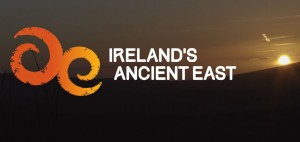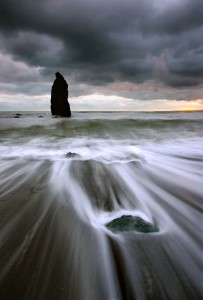 Local debate continues a year after concept’s launch
Local debate continues a year after concept’s launch
Kieran Foley reports
ONE year on since the concept was unveiled, varying views have been expressed in Waterford in relation to the impact of ‘Ireland’s Ancient East’.
The Fáilte Ireland tourism proposition was launched amid much fanfare last April and is viewed as an alternative to the hugely successful ‘Wild Atlantic Way’ from which Waterford was excluded.
Local tour operator Jim Falconer, who was one of the first people to speak out over Waterford’s exclusion from the ‘Wild Atlantic Way’, believes ‘Ireland’s Ancient East’ has had “absolutely no impact”.
“I’m dealing with a lot of overseas tourists and they have never heard of ‘Ireland’s Ancient East’ but they have all heard about the ‘Wild Atlantic Way’. I haven’t met one tourist who has spoken about ‘Ireland’s Ancient East’,” he said.
He believes the Wild Atlantic Way was “probably the best idea Fáilte Ireland ever came up with…but we’re losing out hugely. Waterford has been sold down the river yet again”.
Mr Falconer added: “People coming across on a ferry to Rosslare are actually encouraged to bypass Waterford and Wexford and head directly to Kinsale to begin the Wild Atlantic Way. By telling people to go to the ‘Wild Atlantic Way’ they are indirectly telling tourists to ignore Waterford and Wexford.”
Jim Falconer described ‘Ireland’s Ancient East’ as “a very bad sop” which was “thrown to the South East”.
He says it’s not acceptable that areas including the Copper Coast have been excluded from the ‘Wild Atlantic Way’, adding that it’s up to the people of Waterford to protest, adding that, at times, he has felt “alone in the wilderness” in highlighting the issue.
However, he acknowledged the efforts of Fine Gael TD John Deasy who has campaigned for Waterford’s inclusion.
A Waterford delegation, which included Deputy Deasy, Council representatives and hoteliers met with Fáilte Ireland and Minister Michael Ring last summer calling for Waterford to be included on the ‘Wild Atlantic Way’.
The Munster Express understands that the response to Waterford’s submission was not deemed satisfactory among some members of the delegation – including John Deasy who has made his displeasure known at the highest level.
Much of the original debate over Waterford’s exclusion from the ‘Wild Atlantic Way’ centred on geography – and whether or not Waterford has an Atlantic coastline.

Ballydwane Cove, County Waterford, which local campaigners feel should form part of the 'Wild Atlantic Way'. | Photo: Noel Browne
It claimed that the IHO’s definition on the Atlantic Ocean excludes the Celtic Sea and therefore the Waterford coastline.
However, Jim Falconer says he has spoken with a number of organisations which have all confirmed that Waterford has an Atlantic coastline.
While it appears as though Waterford’s efforts to be added to the ‘Wild Atlantic Way’ effectively met a brick wall last year, John Deasy indicated at the WLRfm election debate in Dungarvan that
he would “go at it again and give it another shot” if re-elected. “I’m not warming to ‘Ireland’s Ancient East’,” he said.
Speaking at the same debate, Deputy John Halligan (Ind) said it was “beyond belief” that Waterford had been omitted from the ‘Wild Atlantic Way’.
Meanwhile, Chairman of Irish Hotels Federation (IHF) South East branch Aidan Quirke said members in the region have embraced the ‘Ireland’s Ancient East’ concept “wholeheartedly”.
“We hope that it is the same runaway success as the ‘Wild Atlantic Way’ currently is,” he said.
“The bulk of our members in the Waterford area have attended the ongoing Ancient East sessions with Fáilte Ireland. Waterford is quite lucky to have several Ancient East sites stretching from the city out to Ardmore.”
Mr Quirke said he had not met any local or tourist who was specifically following the route, however he highlighted the project was still in its “infancy”.
In relation to the ‘Wild Atlantic Way’, Mr Quirke said there was “general disappointment” among all members that it had not been extended from Kinsale right around to the Wexford coast.
“But we fully embrace ‘Ireland’s Ancient East’ as our new marketing opportunity,” he said.
Sales and Marketing Manager at The Tower Hotel Avril Bowe said she believes ‘Ireland’s Ancient East’ presents many opportunities for Waterford. “We’re delighted to be working with all the local and national stakeholders on this exciting and engaging project,” she said.
“‘Ireland’s Ancient East’ is a completely different proposition to the ‘Wild Atlantic Way’ with a focus on visitors experiencing some signature experiences during their time in the region, but also to delve a little deeper, and dwell a little longer and truly explore authentic Ireland.
“As one of the main accommodation providers in the city, this can only be a good thing. We want people to stay, eat, drink, shop and really visit Ireland’s oldest city, and this initiative encourages domestic and foreign visitors to do just that.”
She highlighted the extensive activity which is being undertaken in relation to ‘Ireland’s Ancient East’ this year which includes the erection of 100 ‘Ireland’s Ancient East’ orientation signs and 300 county boundary signs.
“Next month we head to Meitheal in Dublin to meet over 200 overseas tour operators and group organisers with a view to secure future business,” she explained.
“We will be in attendance to promote the hotel, Waterford and ‘Ireland’s Ancient East’. The message at this year’s gathering will be overwhelmingly about ‘Ireland’s Ancient East’ and Waterford, as one of the cornerstones, will no doubt benefit hugely. We consider this a massive opportunity for Waterford plus the region and support the initiative 100%.”
Meanwhile, Metropolitan Mayor Eamon Quinlan (FF) has issued a renewed call for Waterford to be included on the ‘Wild Atlantic Way’.
“I definitely think we should still be included in the ‘Wild Atlantic Way’. It is a major investment in the tourism sector and is a strategic offer being advertised in foreign countries,” he said.
“Our exclusion leaves our local tourism sector behind in our offering of surfing, hiking, hillwalking and all other core activities that are associated with the ‘Wild Atlantic Way’ as many visitors can be lead to believe that these are not on offer outside of the defined area…
“In truth Waterford makes the perfect connection where the ‘Wild Atlantic Way’ will meet ‘Ireland’s Ancient East’. There is a missed opportunity to overlap both products to easily make the offer of both to the same potential tourist and expand our tourism scope and scale.”
He continued: “‘Ireland’s Ancient East’ is currently still in its development stages and would not be in a position to, as yet, create an impact locally. Many of the items that will feature such as the Viking Triangle and City Walls already have a strong appeal so it builds confidence that a larger, international offer on products like these will lead to increased tourism for Waterford and the region as a whole.”
Speaking at a tourism event in Loftus Hall earlier this month, Fáilte Ireland’s Laura Woods said that ‘Ireland’s Ancient East’ had already led to the creation of 30 new tour programmes, and drawn 270 international journalists from 14 countries to sample its historical and cultural wares.
“It is intended to match and complement the ‘Wild Atlantic Way’, and the attitude of international tour operators to the Ancient East initiative has already been incredibly positive,” she said.
“The visible presence of the brand will appear throughout the destination in the coming months. County boundary signs will signify to visitors that they are in ‘Ireland’s Ancient East’ and the first phase of orientation signage will appear at key visitor attractions which will inform visitors of other things to see and do in the area.”
